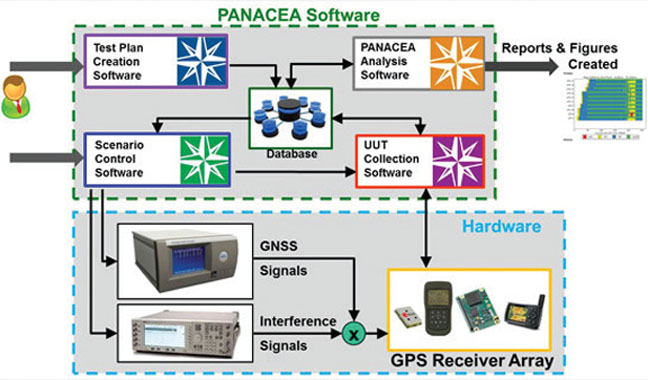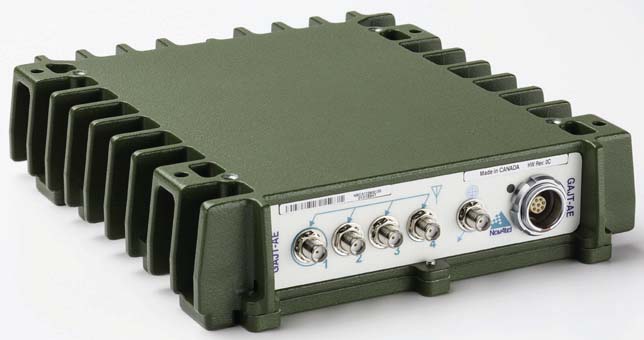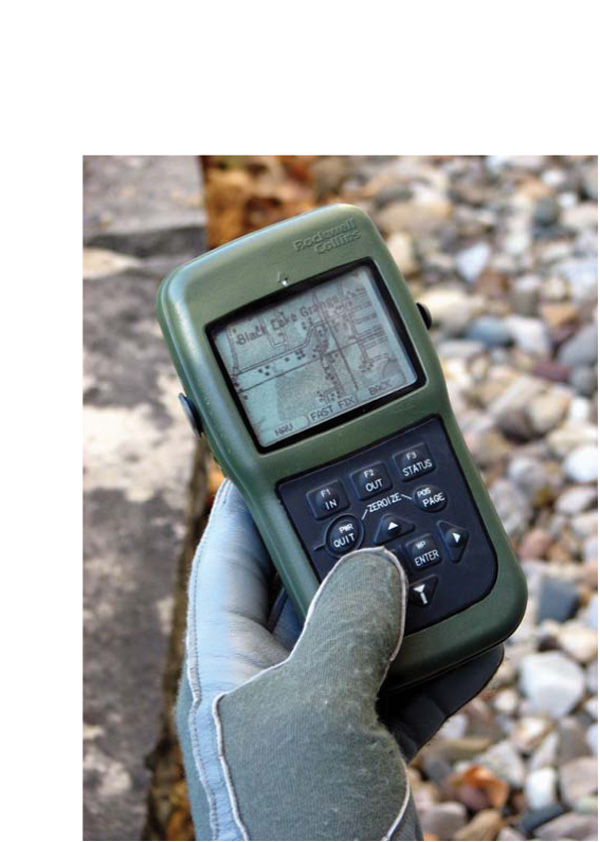
The U.S. Army has adopted PreTalen Ltd’s PANACEA as its principal test asset supporting the Army’s positioning, navigation, and timing (PNT) System of Systems Architecture (SoSA) testing of GPS receivers.
The U.S. Army has adopted PreTalen Ltd’s PANACEA as its principal test asset supporting the Army’s positioning, navigation, and timing (PNT) System of Systems Architecture (SoSA) testing of GPS receivers.
An Ohio-based small business, PreTalen partnered with the Air Force Small Business Innovation Research (SBIR) program to develop PANACEA, a software tool that can automatically test more than 30 receivers at the same time, simultaneously controlling the GPS signal simulator and multiple interference sources, and logging the position and timing outputs from all of the receivers.
The PANACEA system controls and collects data from a GPS signal simulator and an array of dissimilar GPS receivers. A set of “motions” describing the simulated position of a GPS receiver is generated. The GPS signal simulator generates signals corresponding with these motions, then bundles motion scenarios together into a test plan. The test plan is executed and GPS receivers generate positioning messages, which are stored for analysis.
Before PANACEA, testing of military GPS receivers required establishing a connection between the receiver and a GPS signal simulator, invoking logging software to record position outputs from the receiver, and using another software application to compare the logged results against the true positions generated by the simulator. Since each receiver had to be tested separately, the process was painstaking, labor intensive and prone to error.
“PANACEA has enabled our test engineers to conduct device characterization and performance testing across a vast number of simulated operational environments,” said Kevin Coggins, PNT program manager for the Army SOSEI office. “PANACEA allows us to gather invaluable data that is being used to shape the Army’s assured PNT program and the Army PNT SoSA.”
“Developing PANACEA under this SBIR award puts PreTalen on the map,” said Greg Gerten, PreTalen’s chief technology officer. “We now have the opportunity to make significant contributions in the preservation of GPS signal integrity for both military and civilian users.”
PreTalen has recently stepped up production to meet increased demand.




